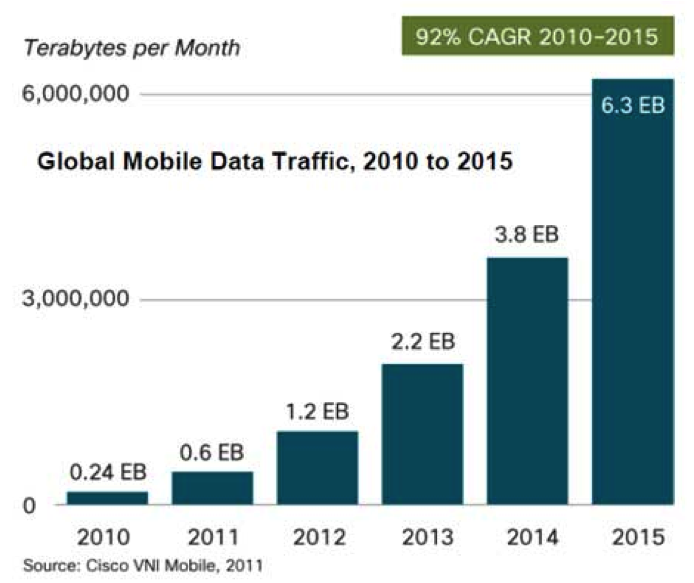It’s time to face the facts – the mobile web is here to stay. In the last year alone, the percentage of web traffic that can be chalked up to mobile devices has more than doubled and there are now more mobile phones in the UK than people.
When the first iPhone launched it was seen as a major catalyst in the growth of mobile web. Now, six years on, it seems designers and developers are finally getting a grip on how best to handle user experience on a smaller screen.
One inevitability of people using mobiles to access the web is businesses need to follow suit in order to attract and retain clients. The case for going mobile is obvious. Businesses in a range of industries are reporting a significant increase in traffic from mobile devices and, with the huge number of new devices being shipped each day, that number is only going to grow exponentially.
Of course, keeping up with the demands of your consumers is paramount, but the really important stat surrounds the fact that time spent browsing the web on a mobile device has now overtaken that spent on a desktop.

If you remember, around a decade ago the coin dropped for most business owners that they needed a website. A similar revolution is taking place again right now. If someone using a mobile browser hits your website and sees that it isn’t designed to be used on the device in their hand, the website leaves them somewhat lacking. This, in turn, suggests to the user that the business in question isn’t keeping up with standards and certainly doesn’t care about user experience. A recent survey has suggested that 40% of users have turned to a competitor’s website after having a bad mobile experience.
This, of course, is a major concern, but the biggest problem for most business owners now is where to start, in a sea of options and tech jargon. Here are some things to consider.
Option 1
The most popular and flexible method of creating a mobile-friendly is responsive web design, or RWD. This method has seen such increased popularity as CSS and media queries have also developed alongside the mobile web. The advantages of making your website responsive in this way are numerous. Firstly, all URLs, across all devices and platforms will be the same. This makes it easier for users to re-access the same information later on a different device as well as share content, for example on social media.
Option 2
Another option is to build a mobile specific site. This is where you serve a completely new website that runs independently of your desktop site. The browser can detect the device visiting the site and serve the appropriate URL. This can be good if you are building something very specific for each device. The drawback, however, is that you have to effectively manage twice or even three times the load (if you also have another site for tablets, for example).
Option 3
The third possibility can be thought of as a kind of hybrid between the first two (though not strictly true). This option involves dynamically serving the content on a webpage based on the device in use. In this case, the page URL would stay the same, but you could change the content on a per device basis.
To summarise…
Without a doubt, offering visitors a pleasurable experience when browsing your site should be a top priority during your next development phase. You probably haven’t missed the boat just yet, but its sailing soon, and if you’re thinking “but my competitors haven’t gone mobile yet” then this is your chance snap up that 40% of visits that are leaving their site!
Here at Upperdog we’ve got our fair share of experience in mobile site design, so no matter which method is taking your fancy we’re here to help. For any queries regarding web design in Bournemouth and the surrounding areas, feel free to get in touch.